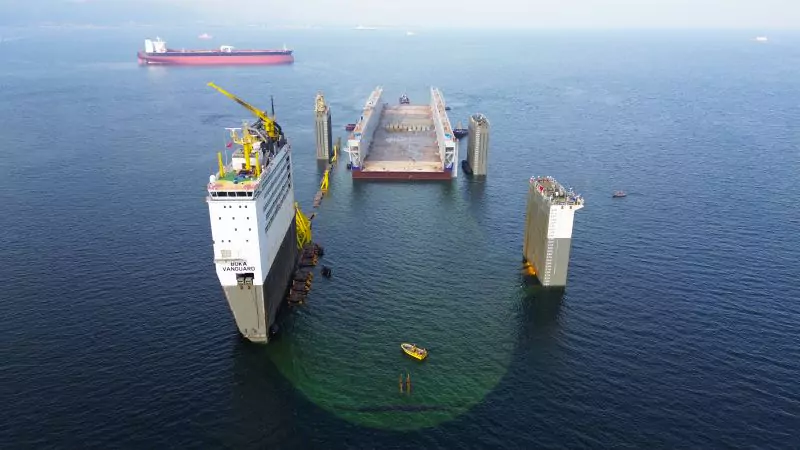
Kuehne+Nagel Delivers Türkiye’s Largest Floating Drydock to the USA: A Feat of Engineering Precision
We had checklists. Then we had checklists for the checklists—every detail accounted for, nothing left to chance,” recalls Aliye Erkan Bıyık, National Project Logistics Manager at Kuehne+Nagel in Istanbul, Türkiye.
That level of precision is not optional when your cargo weighs 17,300 tonnes.
This was no ordinary shipment. It was the largest floating drydock ever constructed in Türkiye—and it was headed for San Diego, USA.
Engineering a Maritime Marvel
Floating drydocks are immense U-shaped mobile structures used to lift vessels from the water for repair and maintenance—particularly when damage lies below the waterline. Unlike fixed drydocks, they can be relocated, making them highly versatile for global operations. They operate by submerging under a vessel, then deballasting to lift it out of the water. Since most drydocks lack engines, they rely on tugboats for mobility.
The project was commissioned by General Dynamics NASSCO, a leading American shipbuilding and repair company. The challenge: transport the drydock from its shipyard in Yalova, Türkiye, across oceans to San Diego, California.
“Our work began the moment the mooring ropes securing the drydock were released,” says Aliye. “It was towed by four tugboats into open waters to be positioned for loading onto a heavy-lift vessel.”
The Giant Meets Its Carrier
Enter the BOKA Vanguard—one of the world’s largest semi-submersible heavy-lift ships, owned by maritime solutions leader Boskalis. At 275 metres long and 75 metres wide, it was one of few vessels capable of carrying a structure as massive as this drydock: 253 metres long, 54 metres wide, and 21 metres tall.
With millimetre precision, tugboats maneuvered the drydock to the stern of the Vanguard. Thanks to the ship’s submersible technology, the drydock was floated into position before being lifted and secured for the long haul across the Atlantic and Pacific Oceans.
“It took days to safely position and lash the structure,” says Aliye. “Every centimetre was double-checked. Additional boats were on standby to transfer crew and engineers between the port, drydock, and carrier.”
A Journey Across Oceans
After three days of meticulous loading operations, the drydock was secured on board. The 13,500-nautical-mile journey had begun—through unpredictable seas and towering 20-metre waves. Due to its massive dimensions, the BOKA Vanguard had to sail around South America, bypassing the Panama Canal.
What sounds like a straightforward transport job was, in reality, a masterclass in global logistics. This wasn’t just cargo; it was a sea-based megastructure, moved without its own propulsion, dependent entirely on planning, calculation, and coordination.
Mission in Motion
The successful departure marked a milestone for Kuehne+Nagel’s project logistics team. “This operation took months of preparation—from engineering designs and risk assessments to route planning and structural calculations,” Aliye notes. “We’re proud of the collaboration that made it possible.”
Next stop: San Diego, where Kuehne+Nagel’s U.S. team awaits to oversee the final phase of this historic delivery.
About Kuehne+Nagel
With more than 82,000 employees at almost 1,300 sites in close to 100 countries, the Kuehne+Nagel Group is one of the world’s leading logistics providers. Headquartered in Switzerland, Kuehne+Nagel is listed in the Swiss blue-chip stock market index, the SMI. The Group is the global number one in air and sea logistics and has strong market positions in road and contract logistics. Kuehne+Nagel is the logistics partner of choice for 400,000 customers worldwide. Using its global network, logistics expertise and data-based insights, the Group provides end-to-end supply chain solutions for global companies and industries.

